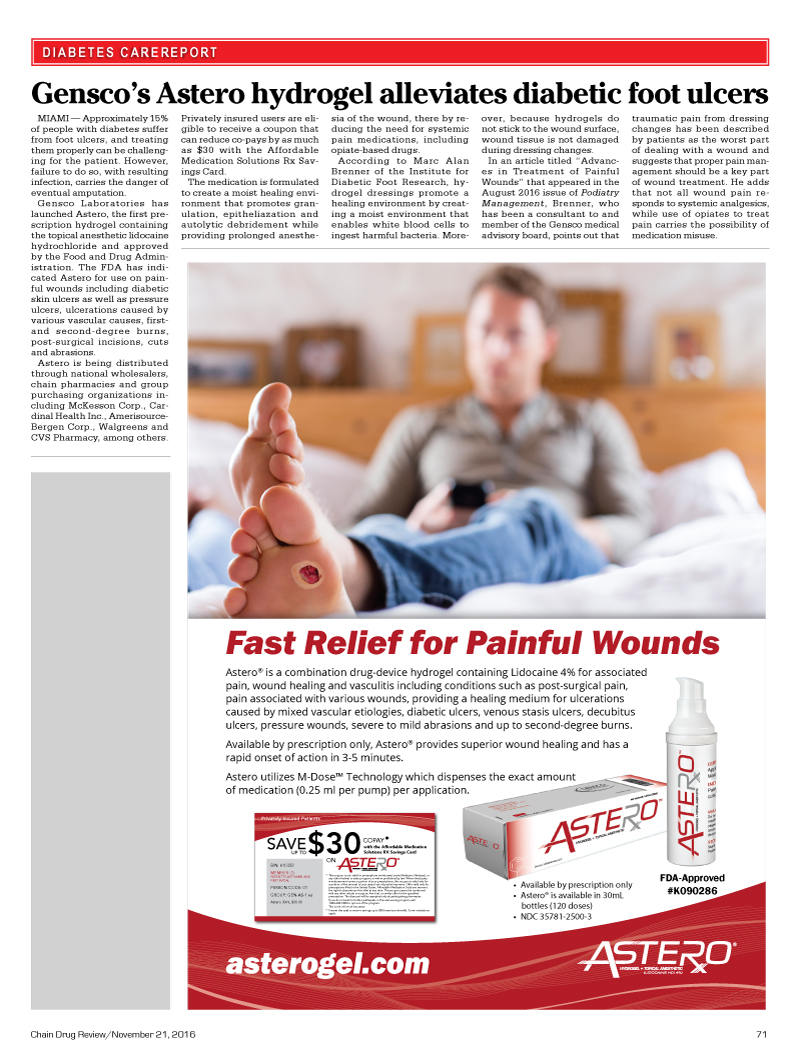Editorial in Chain Drug Review (Diabetes Care Report) | November 21, 2016
MIAMI — Approximately 15% of people with diabetes suffer from foot ulcers, and treating them properly can be challenging for the patient. However, failure to do so, with resulting infection, carries the danger of eventual amputation.
Gensco Laboratories has launched Astero, the first prescription hydrogel containing the topical anesthetic lidocaine hydrochloride and approved by the Food and Drug Administration. The FDA has indicated Astero for use on painful wounds including diabetic skin ulcers as well as pressure ulcers, ulcerations caused by various vascular causes, first and second-degree burns, post-surgical incisions, cuts and abrasions.
Astero is being distributed through national wholesalers, chain pharmacies and group purchasing organizations including McKesson Corp., Cardinal Health Inc., Amerisource-Bergen Corp., Walgreens and CVS Pharmacy, among others. Privately insured users are eligible to receive a coupon that can reduce co-pays by as much as $30 with the Affordable Medication Solutions Rx Savings Card.
The medication is formulated to create a moist healing environment that promotes granulation, epitheliazation and autolytic debridement while providing prolonged anesthesia of the wound, there by reducing the need for systemic pain medications, including opiate-based drugs.
According to Marc Alan Brenner of the Institute for Diabetic Foot Research, hydrogel dressings promote a healing environment by creating a moist environment that enables white blood cells to ingest harmful bacteria. Moreover, because hydrogels do not stick to the wound surface, wound tissue is not damaged during dressing changes.
In an article titled “Advances in Treatment of Painful Wounds” that appeared in the August 2016 issue of Podiatry Management, Brenner, who has been a consultant to and member of the Gensco medical advisory board, points out that traumatic pain from dressing changes has been described by patients as the worst part of dealing with a wound and suggests that proper pain management should be a key part of wound treatment. He adds that not all wound pain responds to systemic analgesics, while use of opiates to treat pain carries the possibility of medication misuse.
